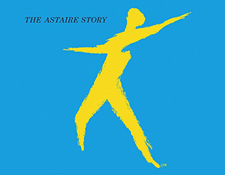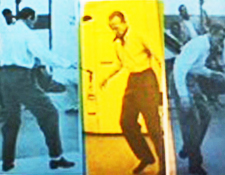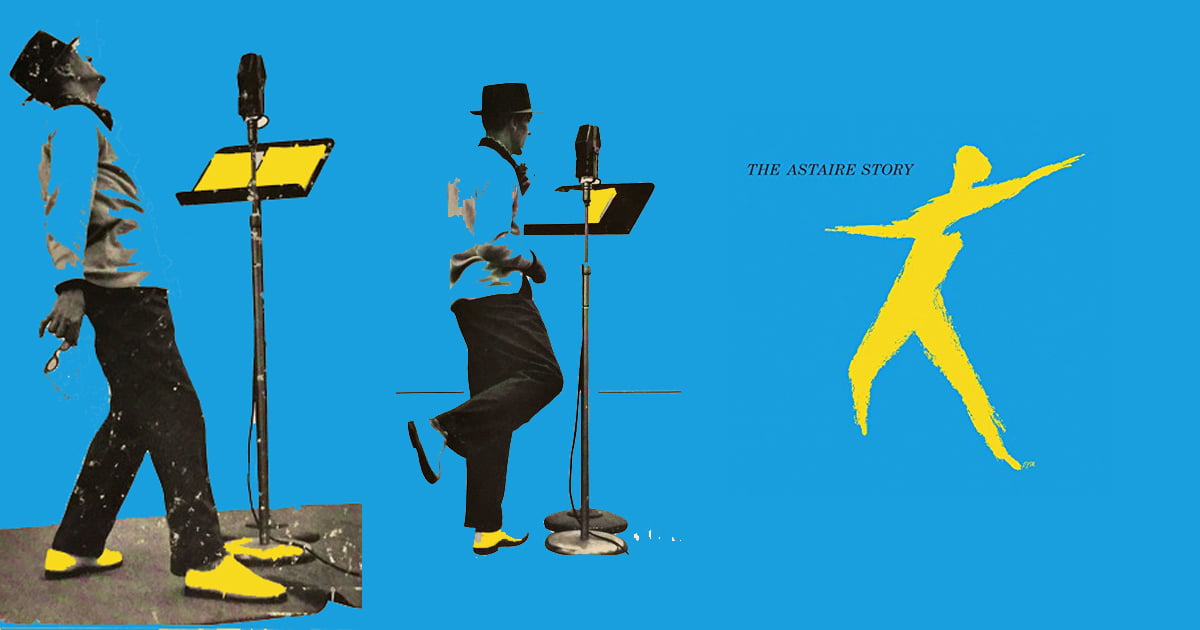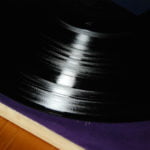It’s the time of year for saving money!
There is a compelling new reissue CD from the good folks at Universal Music Group which compiles sessions recorded in the early 1950s by producer Norman Granz — a pairing of piano legend-to-be Oscar Peterson with already-legendary dancer, singer and actor, Fred Astaire — into a multi-disc set called The Astaire Story.
 “Fred Astaire?,” you ask? Yes, Fred Astaire. Astaire, the great hoofer, star of stage and screen who was one of the biggest stars of his day (he died in 1987). Astaire who performed on Broadway as early as 1917 (!) and had his big breakthrough in 1924 in the first Broadway musical by George and Ira Gershwin, Lady, Be Good. Talk about being on pop music’s original cutting edge…
“Fred Astaire?,” you ask? Yes, Fred Astaire. Astaire, the great hoofer, star of stage and screen who was one of the biggest stars of his day (he died in 1987). Astaire who performed on Broadway as early as 1917 (!) and had his big breakthrough in 1924 in the first Broadway musical by George and Ira Gershwin, Lady, Be Good. Talk about being on pop music’s original cutting edge…
While it seems an unlikely combination at first, these recordings of Fred and Oscar (and company) make a remarkable amount of sense and are actually a quite powerful listen as they put, then for the first time, Astaire into a contemporary, modern jazz environment.
Fred Astaire, widely known for his incredible dancing in the movies was also a competent singer with impeccable delivery and thus became something of a focus for many songwriters of the period, many of whom wrote songs for him. So it is particularly mind blowing when you hear him on this record periodically discussing the music, moments where he just says very naturally and off the cuff (essentially, paraphrased) ‘… this is a song that Irving Berlin wrote for me.’ It is then that you realize that — OMG! — this guy introduced many songs to the world that have gone on to become part of the so-called Great American Songbook.
 Indeed, from the official press release we reaffirm: “While his dancing gained the biggest acclaim, he was a personable singer who perfectly placed his notes, always swinging. Such composers as George Gershwin, Irving Berlin, Jerome Kern and Cole Porter loved to have him introduce their songs in the movies because, while sticking to the lyrics and the melody, he uplifted every tune that he interpreted with his phrasing and classy personality.”
Indeed, from the official press release we reaffirm: “While his dancing gained the biggest acclaim, he was a personable singer who perfectly placed his notes, always swinging. Such composers as George Gershwin, Irving Berlin, Jerome Kern and Cole Porter loved to have him introduce their songs in the movies because, while sticking to the lyrics and the melody, he uplifted every tune that he interpreted with his phrasing and classy personality.”
I have owned one of these original albums on LP for a number of years. While they are not particularly heavy collectors pieces price-wise — there are several up on Discogs.com going for about $20 a disc in VG condition — they are fairly elusive to find in stores and out in the wilds of hard core record collecting (ie. crate digging, as many of us call it). So many of these early jazz recordings were made in limited quantities — one fan commentary on Amazon indicates that about 1300 copies of the original multi-disc Astaire set were made (on blue translucent vinyl!). Add to that factor that in 1952-1954 or so when these recordings were first manufactured, they were likely played on less than audiophile grade gear. Thus, finding genuinely clean condition copies of these recordings is quite difficult.
Which makes a CD reissue of The Astaire Story all the more welcome. You can also stream this music online and services such as Tidal. Both sound real nice and clean in basic CD quality, which is in many ways just fine for these early Monaural recordings. I’ll put it this way: comparing it to the original vinyl pressing I have (Volume 3 of the series), what the digital versions may lack in warmth is made up for in the lack of noise floor (which is not insignificant on the old LP).
Any way you cut this rug, these are fascinating and even important recordings to experience, especially if you are a fan of popular song and swinging jazz arrangements of pop classics. These aren’t the antiquated early arrangements from the 1930s. I think it is fair to say that these were (at the time) a new way of hearing this music, backed by a jazz group — all the players fresh from stints in producer Granz’ Jazz At The Philharmonic concert tour series — swinging with all cylinders firing in a post-Big Band, post-Be Bop manner. The group includes saxophonist Flip Phillips, trumpeter Charlie Shavers, guitarist Barney Kessel, bassist Ray Brown and drummer Alvin Stoller in addition to Oscar Peterson on piano.
Check out the difference between the 1935 film version of “Top Hat, White Coat And Tails,” as compared to the version from The Astaire Story, which just swings and swaggers, oozing confidence, a plush performance. Night and day, indeed.
Throughout the sessions Astaire rises to the challenges of playing with these soon to be jazz giants and you can hear the joy in his performances as he revisits many of the songs which made him famous including “Puttin’ On The Ritz,” “The Continental,” “Let’s Call The Whole Thing Off,” “Cheek To Cheek,” “Dancing In The Dark,” “I Won’t Dance,” “No Strings” (with Peterson on Celeste!) and “A Foggy Day.”
Many of the songs included are from Astaire’s movies with Ginger Rogers, most by Irving Berlin and George Gershwin. He even performs two of his own compositions (“I’m Building Up To An Awful Letdown” and “Not My Girl”).
When you get this set, be prepared to be inspired. Heck, you might event want to put on your top hat ‘n tails because you might find yourself dancing around the room little bit. Fred Astaire with Oscar Peterson’s fine young jazz combo make some grand music here that is, as they say: “‘S Wonderful!”









